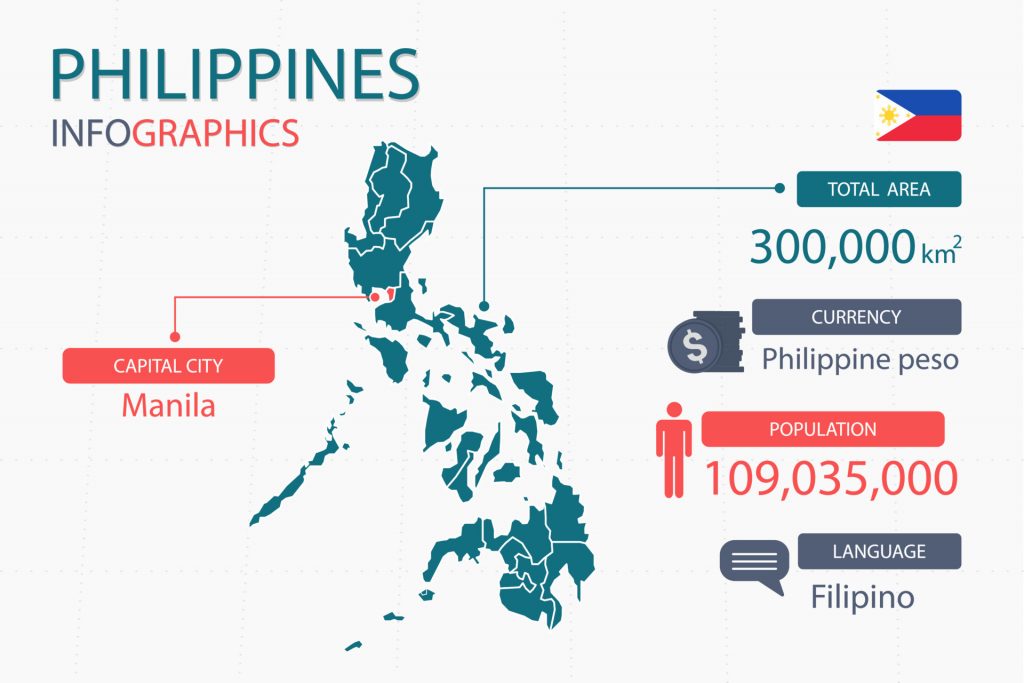The origins of the Tagalog Language
Tagalog language is a language primarily spoken in the Philippines, even though only a quarter of the population speaks it as their native language. However, the majority of the population speaks it as a second language, and with such a status, Tagalog has been made the official language of the Philippines, officially being called Filipino. Along with English, it is one of the two official languages of the Philippines. It has about 28 million native speakers, and 45 million people who speak it as a second language. There are many regional languages in the Philippines, our Tagalog Translators and Philippino translators can provide translation in most Phillippine languages. In terms of language family, it is considered an Austronesian language. It is related to other languages in the Philippines (the Bikol language, Kapampangan, and Pangasinan language, for example) but also shows ties to a variety of other Austronesian languages ranging from the Formosan languages native to Taiwan, Malay, Indonesian, Hawaiian, and others.
While the Tagalog language originates from the Austronesian branch of the family from a genealogical perspective, other languages outside this branch of the family have had a heavy influence on Tagalog due to historical and cultural circumstances. This is especially true of its vocabulary, where many loan words stem from languages ranging from Spanish, Malay, English, Chinese and even Nahuatl, a language native to Mexico.
One reason is due to trade with Mexico between the 1500-1800 AD. During this time, loanwords from the Nahuatl language entered the Tagalog vocabulary. Playing a bigger role, though, is the Spanish colonization of the Philippines between 1521 to 1898, which is also known as the Spanish Colonial Period. During this period, many Spanish loanwords entered and even replaced some of the vocabulary that was used in Tagalog. In addition, the Philippines has always been a center of trade and commerce between other countries. Having such a status, many linguistic influences coming from countries that have interacted with the Philippines have shaped the evolution of Tagalog.
In terms of grammatical and phrasal features, Tagalog is unique among languages because of the flexible word order, especially compared to Western European languages. Interestingly, the verb is in the initial position in a sentence, unlike the subject being in the first position in most other languages. Moreover, nouns are usually preceded by particles that mark the case, with there being three basic cases, direct, indirect, and oblique. These features, especially the way the case is marked, is a distinct feature of Tagalog and other languages of the Philippines. One other notable feature is that there are different pronouns to address one’s conversation partner. The difference highlights politeness, social distance, and courtesy.
The Philippines is currently written using the Latin alphabet, similar to English and a plethora of other languages, especially European ones. However, the current writing system was introduced during the Spanish colonial period. Prior to this, it was written using a script called Baybayin, where there were symbols containing three vowels and 14 consonants. During the Spanish colonial period, however, the Latin Alphabet was more readily taught, despite there being high levels of literacy before this era.
After the Latin alphabet was introduced, there have been a number of reforms and changes to the writing system of Tagalog. After the adaptation of Tagalog as a national language, an alphabet consisting of 20 letters called the ABAKADA was introduced. Letters that normally exist in the English and Spanish alphabet such as C, F, J and others were absent from this version. However, in 1987, the Department of Education, Culture, and sports changed the alphabet to a 28-letter alphabet, so that family names that originated from Spanish, loan words, and other aspects of spelling can be accommodated in writing. In addition to the 26 letters that exist in the English alphabet, there is also the Spanish Ñ and Ng (considered one letter). Tagalog is written and read from left to right and there are spaces between words. The punctuation is also similar to English and other Western European languages.

The history of Tagalog is a detailed one due to the aforementioned factors that have affected its development. It can be said to have started from Old Tagalog. The history of Old Tagalog is obscure, but relationships with older languages such as Sanskrit, Old Malay, and Javanese can be identified. Due to trade and commerce in the region, many languages came into contact with Tagalog and influenced its vocabulary and grammar, as well as how it was written. The language started to be documented in more detail during the 333 years of Spanish colonization that the Philippines went through. During this time, a variety of grammars, dictionaries, and linguistic descriptions of Tagalog were written, especially by religious clergymen. At the same time, Spanish impacted its development. In fact, the Philippine constitution designated both English and Spanish as official languages in 1935. Despite this, Tagalog was chosen as the basis of the development of a national language and became a national language in 1987. In 2009, it also, along with English, became a primary language of instruction.
Nowadays, Tagalog is widely used and Filipino translators are readily available throughout the Philippines as well as in other countries where there are large Filipino populations. It also has a substantial culture of literature and media. A large part of the literature of Tagalog stems from religious contributions due to the influence of Spanish missionaries and a majority of the Filipino population being Christian. Another distinct characteristic of current languages in the Philippines is also the use of code-switching. Tagalog is frequently used with English and speakers switch between the two languages, often mid-sentence. This combination of English and Tagalog is usually called Taglish or Englog. Such practice is common throughout the public sphere, including in media, and reflects the current linguistic practices of speech communities within the Philippines.
VEQTA can provide you with a perfect Tagalog translator for your Tagalog translation, English to Tagalog translation and Tagalog to english translation for the your targeted locale. Our translations to Tagalog are created with your target audience in mind to meet your expectations.
If you need to translate Tagalog – Get in touch today!
A dedicated team of Tagalog translators who combines Experience, Specialized Subject Matter Expertise with Translation Practices to deliver quality second to none.
Tagalog Subject Expertise
Tagalog Translators
Tagalog Editors
Tagalog Copywriters
Tagalog Reviewers
Tagalog Voice dubbing
Tagalog Subtitling
Tagalog Transcription


